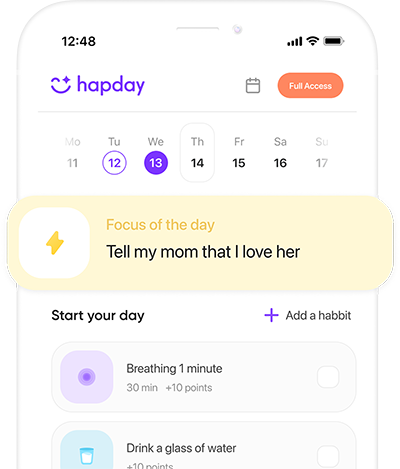You know, Attention Deficit Hyperactivity Disorder (ADHD) isn’t as fringe as folks used to think. These days, recent stats are throwing around numbers like 2.8% of adults worldwide dealing with this — courtesy of Faraone and friends in 2021. But here’s the kicker: ADHD brings along a slew of challenges, and one that’s giving the younger crowd, especially Gen Z and Millennial women, some sleepless nights is burnout. I mean, who’s not juggling ten things at once these days? So, let’s dive into this thing they call a time-frame solution to tackle ADHD-induced burnout, armed with some science and some real-life practicality.
Table of Contents
- Understanding ADHD-Induced Burnout
- The Science Behind the Struggle
- A Time-Frame Solution for the Burnout Battle
- On-The-Spot Tips for Gen Z and Millennial Women
- Conclusion
Understanding ADHD-Induced Burnout
What’s ADHD-Induced Burnout Anyway?
Picture this: chronic stress and exhaustion, not just from your 9-to-5 but because of ADHD itself. That’s ADHD-induced burnout in a nutshell. You’re doing your best to keep up with life’s never-ending demands, and bam! You’re hit with emotional exhaustion, mental fatigue, and this nagging feeling of “I’m not doing enough.” It’s like running a marathon with a sprained ankle. Your mental health and daily life? Yeah, they take a hit.
The ADHD-Burnout Saga
You know the drill—ADHD means you’re dealing with symptoms like inattention, hyperactivity, and impulsivity. Thank the American Psychiatric Association for that one. But how does this tie into burnout? Well, this battle isn’t just in your head; it’s everywhere—work, relationships, personal growth. Imagine being in perpetual overdrive, that’s how burnout creeps in. Barkley’s research in 2020? It pretty much says folks with ADHD face burnout way more intensely and frequently.
The Science Behind the Struggle
Neuro-What?
ADHD brings some brain differences into play, especially in the prefrontal cortex. Yeah, that bit in your brain that’s supposed to handle planning, managing impulses, and paying attention—kind of crucial executive functions. Castellanos & Proal said it first in 2012. When this part doesn’t work as it should, emotions go haywire, stress sticks around longer, and burnout swoops in.
The Psychology Game
If you have ADHD, keeping motivation and focus is like herding cats—messy at best. And society’s song of “keep up!” doesn’t help, right? It piles on stress and feelings of “I’m just not good enough.” No wonder folks feel burnt out and inadequate sometimes—Kooij et al. pointed this out a few years back.
The World and Its Pressures
External pressures come in many forms: work could be crazy, social demands might be high, and personal expectations—well, those never seem to get off your back. Wiegand and the gang wrote about it in 2016. It’s as though you’re constantly winding yourself up to fit in, but all this adapting just drains your energy, leaving you knackered.
A Time-Frame Solution for the Burnout Battle
Step 1: Wake-Up Call
Spotting the Burnout
- Take a deep breath and recognize the burnout signs—chronic tiredness, endless procrastination, forgetfulness, detachment. Spotting these can stop the burnout flood before you’re knee-deep.
Listen to Yourself
Noticed those self-assessment tools around? Use ’em! The Maslach Burnout Inventory (MBI), for instance, sheds light on how burnout’s treating you. It’s like taking a temperature check on your stress levels.
Step 2: Mastering Time Management
Eisenhower to the Rescue
The Eisenhower Box—it’s not rocket science. It helps prioritize what’s urgent and what isn’t. This tool is a lifesaver for anyone, but if you’ve got ADHD, it could help reduce mental clutter.
Time Block Like a Boss
Ever heard of time blocking? It’s setting up chunks of time for different tasks. It limits the chaos, fits quite nicely alongside ADHD challenges, and digital tools can help keep this organized.
Step 3: Healthy Habits
Get That Bean to the Pillow
A bit old-school, but yay for consistent sleep. Healthy sleep patterns do wonders for your cognitive mojo and emotional state. Matthew Walker harped on it back in 2017.
Good Fuel, Good Mood
Ever tried fish, flaxseeds? Omega-3s in ’em reportedly turn the tide on ADHD symptoms, according to Bloch & Qawasmi in 2011. Oh, and don’t forget the gym—or just a jog—exercise ups your dopamine, which in turn boosts focus.
Step 4: Emotional Muscle Building
Finding Zen
Mindfulness, meditation—pick what vibes with you. It’s a pocket tool for attention and stress relief. Zeidan and colleagues were right on the money about this in 2010.
CBT Anyone?
Cognitive Behavioral Therapy (CBT)—it’s like having a mental coach. Safren et al. in 2005 swore by it for managing ADHD woes. It rewires negative thought patterns and builds resilience.
Step 5: Reach Out for Ropes
Professional Lend
Getting professional help—think therapy or counseling—can arm you with much-needed strategies tailored just for you. It’s like having a custom manual for dealing with ADHD.
Find Your Tribe
An ADHD support group could be your new band of besties. Vastly underrated till you’ve tried it, sharing experiences makes struggles seem less…struggling.
Step 6: Reflect and Adapt
Pen to Paper
Journaling—an underrated superhero move. It helps track those ups and downs, recognizing burnout triggers and IT-changes-making-life-better patterns.
Regular Reality Checks
Doing regular self-checks ensures your burnout-beating approaches still work. No shame in tweaking your methods, because life—and stress—can change gears unexpectedly.
On-The-Spot Tips for Gen Z and Millennial Women
Make Tech Your Ally
Digital Whiz for Focus
Apps like Trello, Evernote…they’re your friends for staying organized and reminding you of tasks. A smarter life with lesser chaos is just an app away.
Creating a Strong Backdrop
Express Yourself
Talk about it—share your ADHD struggles with close friends, family, colleagues. An understanding network? Pure gold, if you ask me.
Be Kind to Yourself
Kick Those Unreal Expectations
Lean back from the self-inflicted pressure. Practicing self-compassion doesn’t mean you’re slacking; it’s acknowledging victories, however tiny.
Conclusion
Fighting ADHD-induced burnout? It’s more than just ticking boxes. It’s an approach that digs deep into the issues and claims a structured time-frame solution. A well-crafted plan can let you breathe easier, help you keep stress in check, and help you regain control of your personal and professional ambitions. With a dash of science-backed know-how and a sprinkle of life-savvy tips, your path to well-being awaits! Looking for more personalized support and resources? Check out the folks over at Hapday. They’re just a click away on that journey to wellness!

